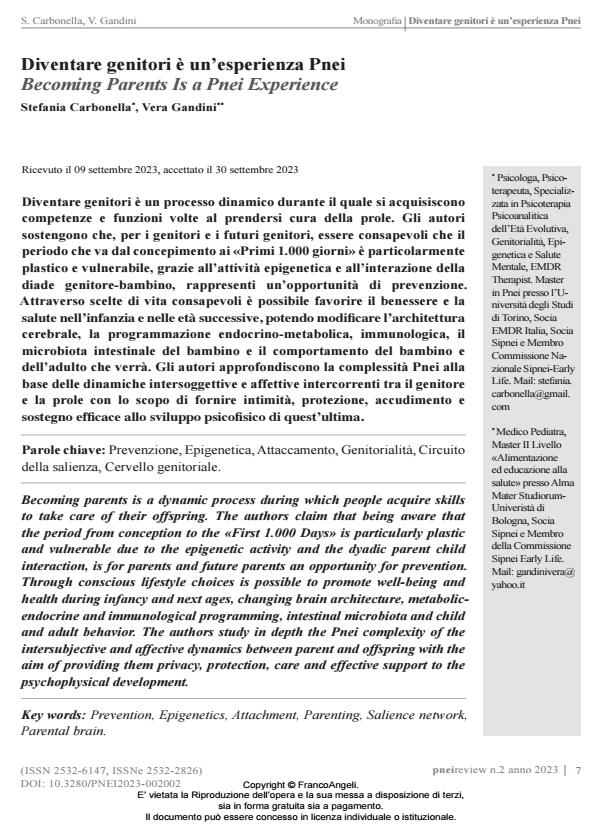Becoming Parents Is a Pnei Experience
Journal title PNEI REVIEW
Author/s Stefania Carbonella, Vera Gandini
Publishing Year 2023 Issue 2023/2
Language Italian Pages 14 P. 7-20 File size 1169 KB
DOI 10.3280/PNEI2023-002002
DOI is like a bar code for intellectual property: to have more infomation
click here
Below, you can see the article first page
If you want to buy this article in PDF format, you can do it, following the instructions to buy download credits

FrancoAngeli is member of Publishers International Linking Association, Inc (PILA), a not-for-profit association which run the CrossRef service enabling links to and from online scholarly content.
Becoming parents is a dynamic process during which people acquire skills to take care of their offspring. The authors claim that being aware that the period from conception to the «First 1.000 Days» is particularly plastic and vulnerable due to the epigenetic activity and the dyadic parent child interaction, is for parents and future parents an opportunity for prevention. Through conscious lifestyle choices is possible to promote well-being and health during infancy and next ages, changing brain architecture, metabolic- endocrine and immunological programming, intestinal microbiota and child and adult behavior. The authors study in depth the Pnei complexity of the intersubjective and affective dynamics between parent and offspring with the aim of providing them privacy, protection, care and effective support to the psychophysical development.
Keywords: Prevention, Epigenetics, Attachment, Parenting, Salience network, Parental brain.
Stefania Carbonella, Vera Gandini, Diventare genitori è un’esperienza Pnei in "PNEI REVIEW" 2/2023, pp 7-20, DOI: 10.3280/PNEI2023-002002